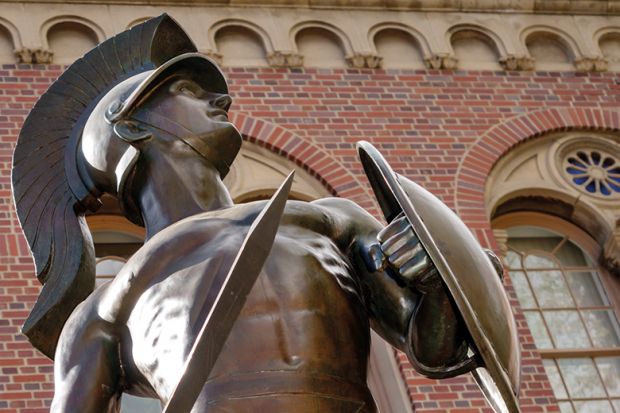It was noon on an autumn day in her third year as a student at the University of California, Los Angeles when Katherine Rosen paused her work in a chemistry lab to reach into a drawer – and sensed someone moving behind her.
It was a classmate with a kitchen knife, who abruptly slashed her neck and stabbed her in the chest.
Ms Rosen almost died from the attack. After recovering, she sued UCLA for failing to warn her or other students about the classmate’s history of hallucinations. The university knew that he thought he had heard voices speaking to him through a wall and that he had imagined people around him calling him an idiot.
Now, in a pivotal pronouncement, California’s highest court has ruled that universities have even more responsibility for the safety of their students than was previously established. This conclusion comes as the highest court in Massachusetts has declared that faculty and staff at universities can be sued for failing to respond after learning that a student is considering suicide. Meanwhile, Michigan State University has agreed to pay $500 million (£376 million) to student athletes who were sexually abused by a staff physician.
Together, these three developments expand the accountability of higher education institutions for their students, at least in environments that the universities control.
“It’s a cycle in a way. The more worries there are, the more security is put on campuses; and the more security they put on campus, the more realistic it is to say that these universities are in the business of making representations to students and their families that they’re going to provide some level of security and vigilance,” said Benjamin Zipursky, professor of law at New York’s Fordham University.
While the cases are nuanced and technically apply only to the states in which they were decided, and the Michigan settlement averts legal proceedings, collectively they show that “absolutely universities are being called on to act in at least a reasonable way if they know there is a potential for harm”, said Joy Blanchard, associate professor of higher education at Louisiana State University.
They also reflect declining public trust in US universities, said Peter Lake, director of the Center for Excellence in Higher Education Law and Policy at Stetson University in Florida, who said that it has been “a seismic spring in student safety law”.
As the cost of a higher education continues to rise, successive public opinion polls have found that majorities of Americans believe that universities put their own interests ahead of concerns for students and have only some, or very little, confidence in them.
Meanwhile, as they compete for applicants, universities often make claims that they will keep their students safe. UCLA, for instance, marketed itself as “one of the safest campuses in the country”.
“I think the turning moment has come when there is a sense of pervasive mistrust of higher education,” Professor Lake said. Rising prices have “created an empowered class of consumers who demand what I call contractual respect”.
Whatever their roots, he said, the cases decided this spring “send an unmistakable signal that there is a sea change in student safety”.
The cases are complex. In the UCLA suit, California’s Supreme Court ruled that, just as bus companies or hotels have an implied responsibility for the safety of their passengers and guests, universities are obliged to protect their enrolled students in facilities that they control or at activities that they sponsor.
Even though students’ attendance is not mandatory, as the university argued it is for pupils in school, “students are comparatively vulnerable and dependent on their colleges for a safe environment”, the court ruled.
The $500 million settlement in Michigan followed disclosures that Michigan State administrators had known for years that a physician on their payroll was sexually abusing student athletes, 332 of whom sued.
The Massachusetts Supreme Judicial Court decided in the Massachusetts Institute of Technology case that faculty and staff may be held liable if they do not react when they learn that a student is considering or has attempted suicide.
That decision came in a lawsuit brought by the family of a 25-year-old MIT student who killed himself. In his case, the student had declined to accept mental healthcare from the university, and instead saw private psychiatrists who did not believe that he was at risk of committing suicide. Nor did MIT have any reason to believe that he would.
Otherwise, however, “suicide is sufficiently foreseeable”, the court ruled, even for people without medical training – including academics – and, when it is, a university is responsible for intervening.
Register to continue
Why register?
- Registration is free and only takes a moment
- Once registered, you can read 3 articles a month
- Sign up for our newsletter
Subscribe
Or subscribe for unlimited access to:
- Unlimited access to news, views, insights & reviews
- Digital editions
- Digital access to THE’s university and college rankings analysis
Already registered or a current subscriber? Login








